(10 pm. – promoted by ek hornbeck)
Posted at DKos as “Just Looking.”
I have a few pleasant photography stories to tell from a week ago. Between the autumn color and the desperation of one last warm weather week, it was a good week for a photo buff. Now don’t go busting my bubble by just looking at the photos because you can learn a lot from a photographer. We see things.
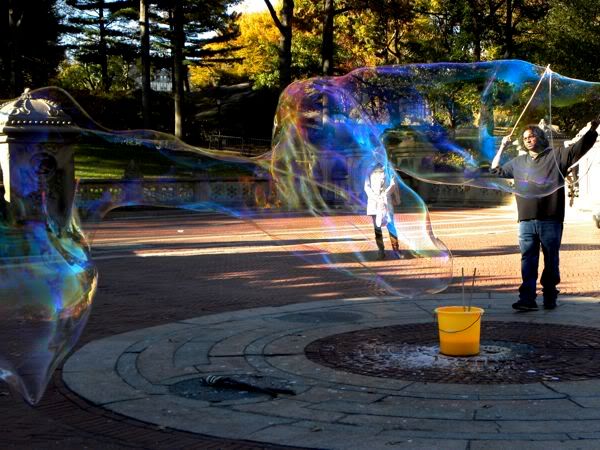
Below you will find a Third Rock from the Sun brief encounter during an evening walk in the Village. I have several memories from a lecture I attended on photojournalism. There is a pleasant Veterans Day walk under the George Washington Bridge on the New Jersey side followed by a sunset from the New York side. Then a Friday afternoon walk in Central Park with some music videos I made and all day Saturday there too. There is even a little taste of Florence, Italy.
My brief encounter would actually be with Kristen Johnston but first something I would be reminded of later on that same evening by Allen Tannenbaum. One of the biggest advantage of photography, a new way of seeing.
It is something I’d been thinking about for a while, this dynamic of living in a freeze frame world. Ever since a day in September of 2006 when I pointed my brand new digital in any direction I could think of at Venice Beach, California and ended my thirty years without photography, a line from Glengarry Glen Ross, “Always be closing,” has been running through my head. Only the phrase has become slightly adjusted and became “Always Be Composing.” That day on the beach I was reminded of something I once knew a long time ago. That once your central focus is how this will look on camera and “Images à la sauvette,” you do find a new way of seeing. Everything becomes a photographic composition and it is not just about copying the way a good DP would frame the view, seeking some symbolism or even the great learning experience. The joy is in really observing not just the subject but the light. It actually does feel like seeing for the first time and the experience is progressive. There is another movie line that I think of when I go out with my camera, Penélope Cruz in Vanilla Sky saying “Open your eyes.”
It was Tuesday afternoon when I had my brief encounter with Kristen Johnston and the air was already charged. I had gotten downtown early to explore the West Village before attending the photojournalism lecture from Susan Watts, Allen Tannenbaum and Susan Meiselas. I didn’t know much about them at the time because photographers don’t get as much credit as they deserve but I was thrilled about hearing their stories.
It was afternoon but it felt like evening. Before the lecture I wanted to try my hand at capturing a little of the West Village feel and go to a fun restaurant called “sNice” I had checked out earlier in the year with Jill Richardson before she spoke in the same lecture series. I never made it to Village Cigar but Greenwich Village has a lot to offer for a person who likes to watch.
Because I’d forgotten about turning the clock back I didn’t realize it would be dark and my brief encounter might have been a little different had there been more light. I don’t get out at night much anymore because now that I’ve gotten into photography I like to be out there when I can find sunlight and shadows to explore. But there was a little charge in the surprising darkness. It has always seemed to me on the first darkened city street walk that the entire city had suddenly changed goals over the weekend. Women have changed wardrobes and everybody seems to have suddenly found a newer and faster pace because the clock was turned back. That first darkened walk has a sort of excitement about it because commuters feel like they had stayed in the office too long and want to get home fast. It seems like everyone has forgotten the summer and gotten back the cold weather hustle. Christmas is coming and kicking through the fallen leaves on Saturday is already here.
If you recall my street photography diary, I never got around to mentioning how street photography came about for me. Not thinking much about invading the privacy of others my collection of street photos came about because of “Chimping.” By chimping I mean that I would be waiting for the street to clear and just taking pictures with people in them to check the viewfinder for compositions hints. Eventually I realized that capturing a lonely homage to the landscapes of NYC was less interesting than my test photos. Capturing how some anonymous city dweller engages their environment doesn’t feel like an invasion of privacy just as long as you keep your distance.
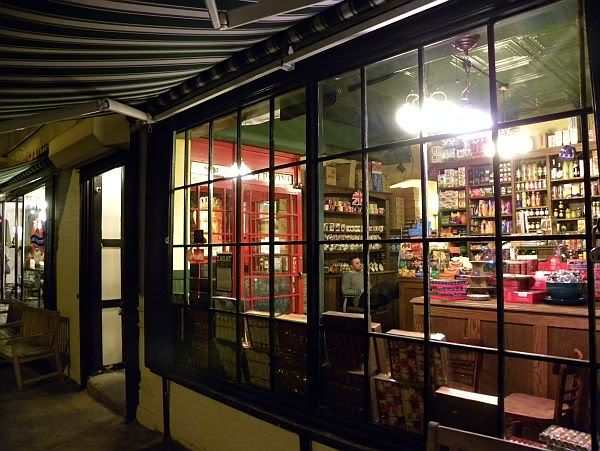
But what about if that person is already famous? When I met Kristen Johnston I was standing not far from the corner of 6th Ave. and 13th St. trying to capture an image of a “Food Emporium” vestibule. Not much of a image really, just something that struck me as a bit obnoxious, a Christmas and clementines display in early November. While I was clicking away the funny and beautiful actress opened the door and through my viewfinder I saw the most inviting smile. Kristen Johnston was smiling directly at me! Because of that invasion of privacy feel I never snapped the photo.
Then she walked over to a man who seemed as though he regularly stands outside the “Food Emporium.” He also seemed homeless and he had his hand out. She approached him, greeted the man by his name and before slipping him a few bucks had a conversation like he was her social equal. I liked seeing that.
After her conversation Kristen Johnston passed me and my camera by. She had no intention of talking with me but I felt compelled to engage a person who does not feel above the homeless. I’m not very good with proper nouns anymore so my introduction did not sound very intelligent. I said “Hi, you’re famous ain’t ya.” She replied with a friendly sarcasm “Well sort of.” As I realized why I’d gotten such an inviting smile I said “Lucky I’m not a Paparazzi.” Kristen Johnston’s eyes light up as she said “That’s who I thought you were when I walked out the door!” Then as she said “I’m really glad you are not one of them,” she pointed at her hair. Her hair seemed perfect to me but I guess she has different standards. Still the woman is very good at her job because she is a comedian and just pointing her finger was very funny.
We chatted a bit more. I told her that I was trying to capture the streets of the West Village. She mentioned enjoying photography. I would have liked to discus her relationship with more annoying photographers but it felt like prying so I didn’t. I had almost asked her to pose for a photo but I’d never be able to resist the temptation of posting a shot of Kristen Johnston standing at the edge of the curb with groceries. I decided to keep the brief encounter pure and the memory in my head.
Finally with little left to talk about, I said “Nice meeting you” and she said the same as I left her waiting for a taxi with her groceries. I walked down 6th Ave. thinking that I’d gotten a big smile from Kristen Johnston because she thought the image was going to end up in US Weekly.
I walked around for a while, pretty new to nighttime urban images and came up with these.
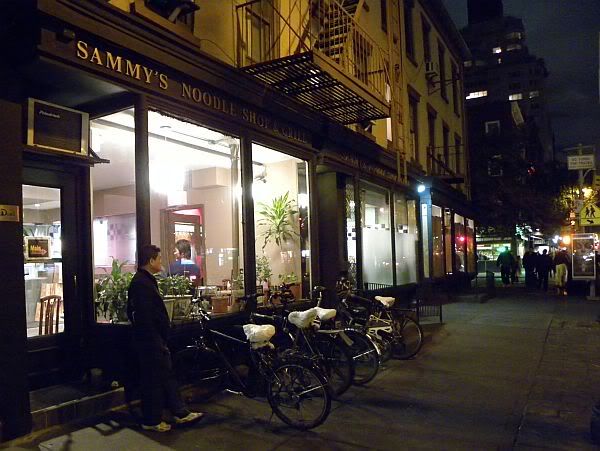
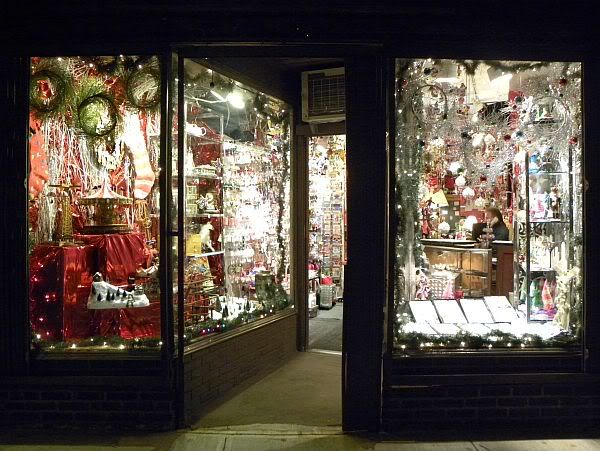
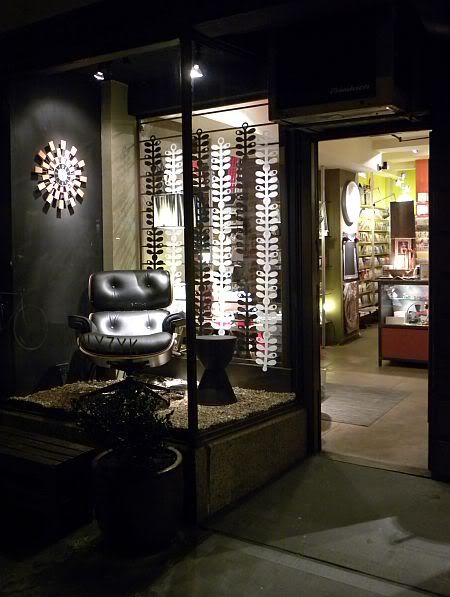
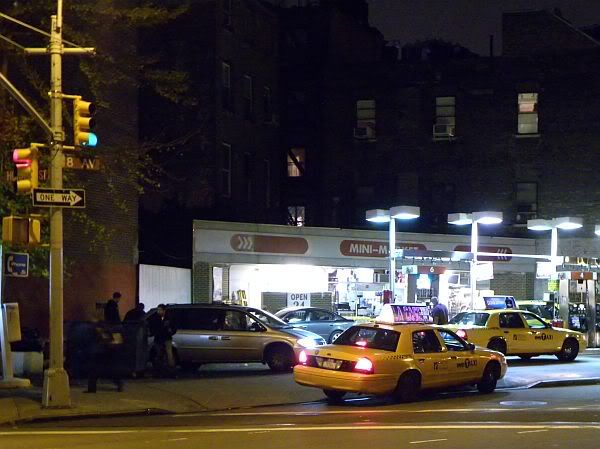
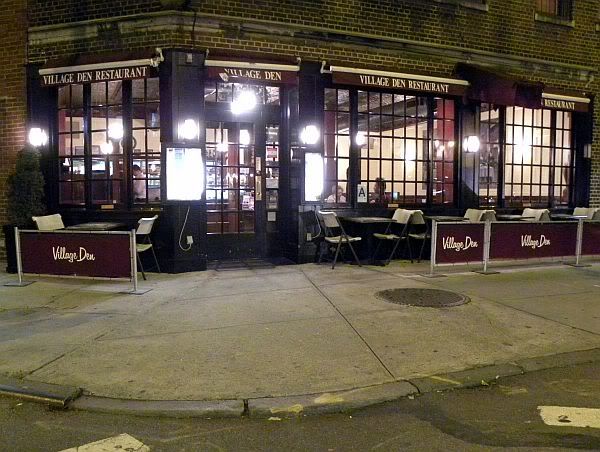

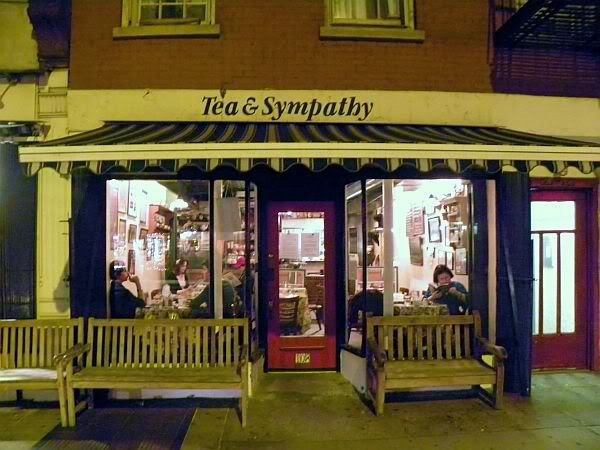
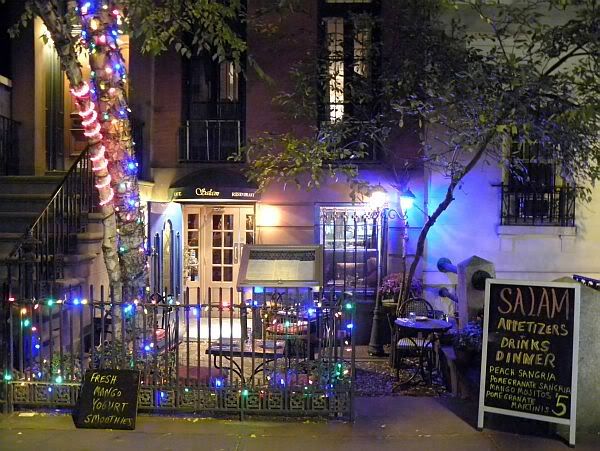
I guess there is light to capture at night. Then I went to the Center for Communications lecture Photojournalism: The Power of the Image where I would learn much more about seeing the light.
I found the first question to be depressing but there would not be much time for self pity because fascinating stories began flowing rapidly. When Jeremy McCarter asked Susan Watts “When did you know photography was for you?” I knew exactly what she meant when she gave her answer. As Susan Watts said it was when she “watched an image develop on paper in a darkroom” I could actually smell the chemicals and remember the magic from my own youth. I had a flashback of when I took a darkroom course in the abandoned 20th Precinct turned community center. I was 21 and I knew right then that was what I wanted to do for the rest of my life. But I had already found a path of least resistance and my cameras would go into a closet for thirty years.
At first it seemed like Allan Tannenbaum who has probably forgotten more about photojournalism than anyone will ever know was not going to say much because Susan Watts can tell a story with the skill of Anna Deavere Smith. Asked about her start in photojournalism Susan Watts told a story about going out one night with her camera when a building in the neighborhood just happened to be burning down. Snapping away some reporter approached her and asked “Did you hear about this on the police band radio?” When she had no idea what he was talking about her new found friend realized how green she was and took her “under his wing” to show her the ropes.
Her big break came in 1993 when the Golden Venture filled with abused Chinese ran aground in the Rockways. Hearing about it on the police band she got out there, got the photos, processed them herself and then went to meet the photo editor of the New York Daily News.
I assume that Susan Watts was talking about Mike Lipack when she described the meeting but while pointing out that he still calls her “kid” to this day, when she imitated his voice it sure sounded like Perry White. She walked in with the photos of the Golden Venture and he shouted “Kid, where did you get these photos?” After informing him that she took them “Kid, who processed these contact sheets?” After finding out that she did them herself in her own darkroom “You’re Impressing the shit out of me kid.” Everyone in the auditorium got a good laugh but Susan Watts got a staff position at New York’s Picture Newspaper.
It was a good icebreaker because after that came some real war stories. Susan Meiselas talked about the fact that there are no longer enemy lines and seeing friends die or getting kidnapped. There was a discussion about PTSD for photographers, unlike soldiers they get no help on the battlefield or after. Pointing a ArmaLite M4 at the enemy is scary enough but armed with Nikon D3 and without support of fellow soldiers. All alone with your life on the line while trying to tell a story.
Susan Watts left out her harrowing experiences that varies from Honduran gunmen to the NYPD but did explain that her PTSD therapy was usually a few glasses of wine. Allan Tannenbaum discussed trauma too but got to an upside and almost sounded like he was waxing nostalgic, remembering the days when he would read about some far off war in his New York apartment. He would then call the airlines and worry about getting hired by a magazine once he got to the war zone. With so many magazines gone, those days seem gone but there will still be wars recorded by local photographers.
Allan Tannenbaum has taken some very memorable photos on the local New York scene. This one and this one of John and Yoko for starters. But all three of these photographers who had traveled the world to get the photo walked out of their apartments on September 11th and those stories while extremely disturbing also told the most about what it means to be a photojournalist. Obviously while they had each traveled all over the world to document the worst events that mankind can produce, they did not need to explain that this was the worst thing they ever saw. Of course there were stories of survival instinct vs. capturing history. Just the fact that they left their apartments and ran toward instead of away from the place that would very shortly be known to the world as “Ground Zero” was a story that everyone listening was already thinking about.
It’s actually hard to articulate, emotions relayed that were more visual than aural. Appropriate for photographers telling photographers what they saw and felt. Allan Tannenbaum talking about backing away from the plaza before the first tower went down when he usually gets as close as possible was chilling. Susan Watts asking “Do you remember seeing me just before the tower fell?” invoked the visual of both of them soon covered in ash. It was a lecture hall but you could feel the horror of people thinking “this is the end.”
While it seemed like the world was ending Susan Meiselas concentrated on capturing the emotions of the people, Allan Tannenbaum pointed his camera up at the tower, capturing the explosion of the second plane hitting and Susan Watts took that most disturbing photo of a person in midair who had chosen a nine hundred foot fall over burning to death. They told the audience what that was like.
That photo of someone jumping to their death began an ethics discussion. When do you not take the photo? The answer was “never” and there was mention of photo editors acting as filters. Not so common in the age of internet reporting. This moved to a discussion about the time to put down the camera and just help. All agreed there is a time but Allan Tannenbaum told a story about a time he ended up the subject of instead of taking a Pulitzer Prize winning photo. He named the photographer but I forgot. It was a person trapped under a collapsed building and after he put down the camera to lend a hand, someone else took the picture.
Here’s a photo of three very important people, 9-11 heroes and some of the people that show us what it looks like. (left to right, Jeremy McCarter, Susan Watts, Allan Tannenbaum and Susan Meiselas)
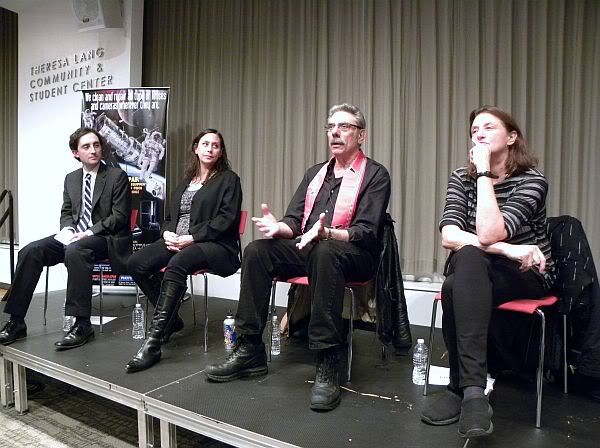
Wednesday’s Child was full of woe.
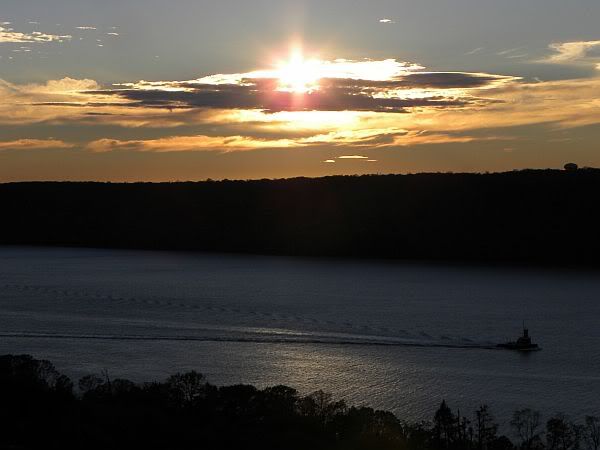
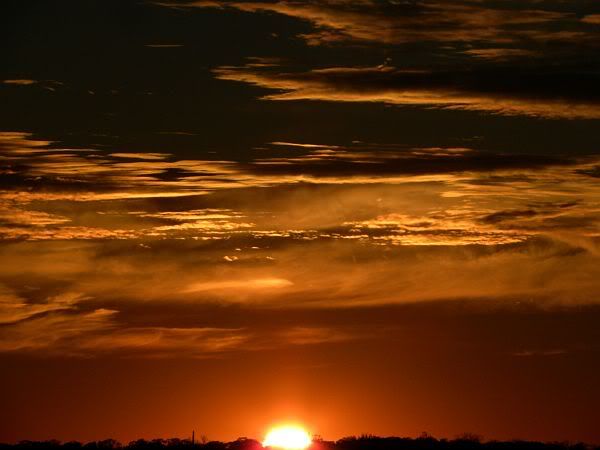

It was very early on Thursday morning, Veterans day on my terrace with breakfast and binoculars looking for hawks migrating as the sun hit the Palisades. I noticed that the New Jersey shoreline was gone. There was no storm but the Hudson had risen to a level I’d never seen before. So I checked the next high tide and decided to drive over for an inspection. The flag was out for Veterans on the George Washington Bridge.
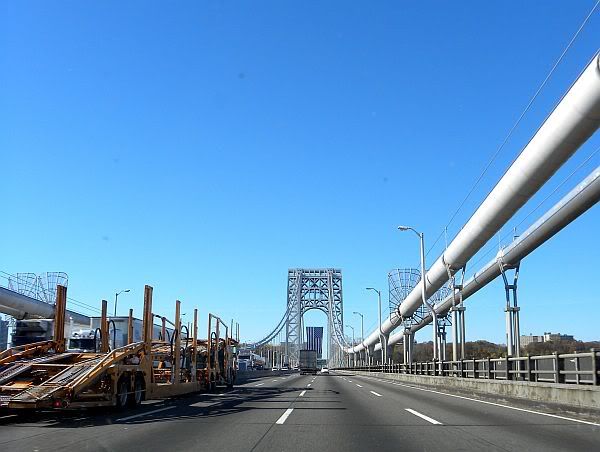
First a short walk along the Long Path up at the top of the Palisades for the type of photography I do, walk in the park pictures.

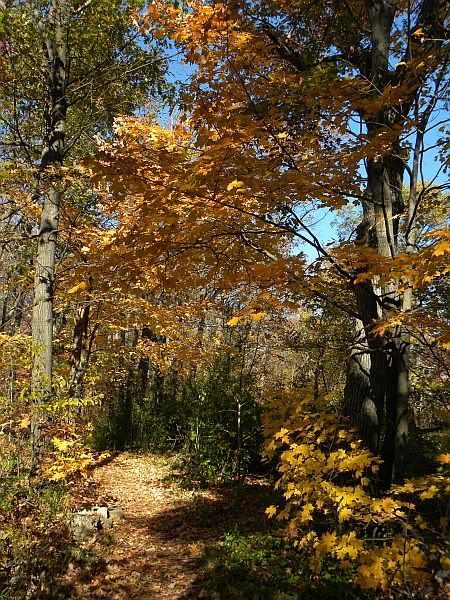
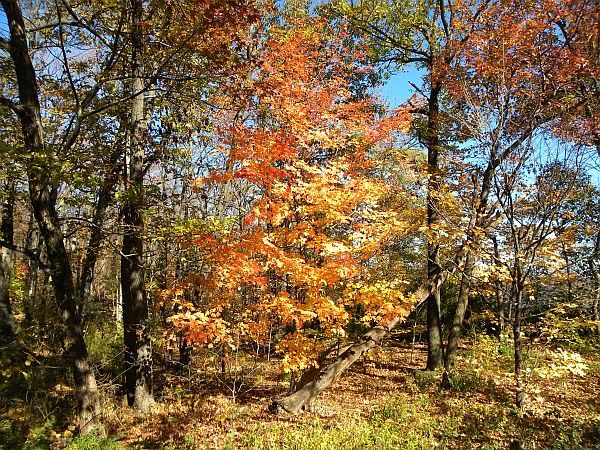
Then a trip down a WPA type road I’ve never been on.
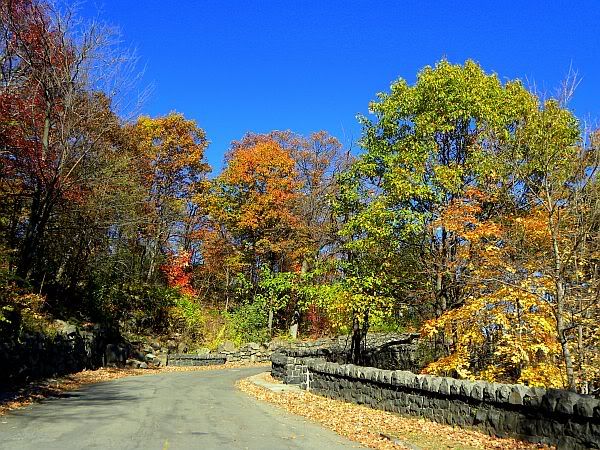

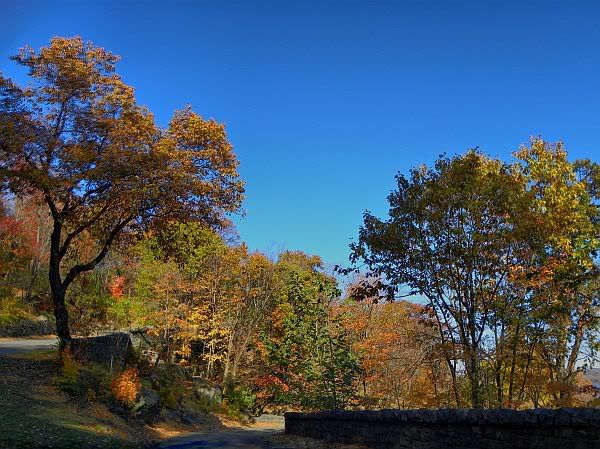
To a place I’ve never seen. Locals told me that there has been floods there but never so high and only during storms. Well they also told me the cops let you park in the grass during a flood and I came back to an $85 parking ticket. The snack bar was closed.
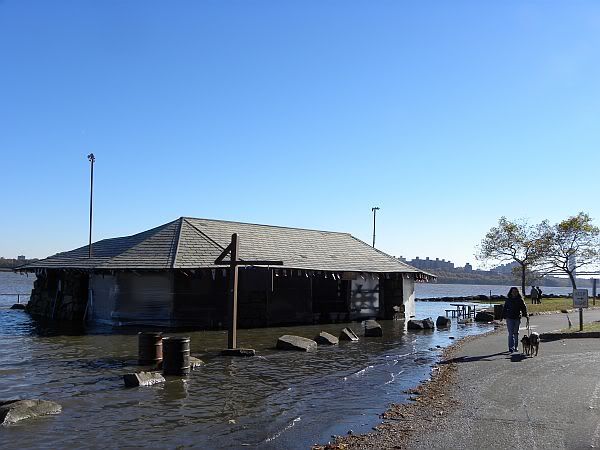
And geese were swimming in the parking lot.

From below the Palisades.
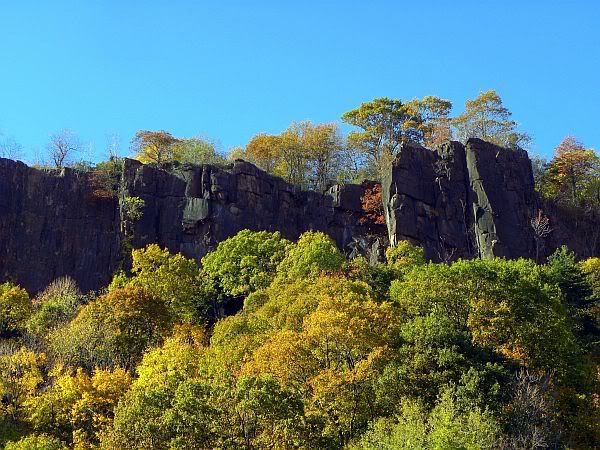
I would find a very pleasant but deceivingly long walking trail to the George Washington Bridge. “There and back again.”
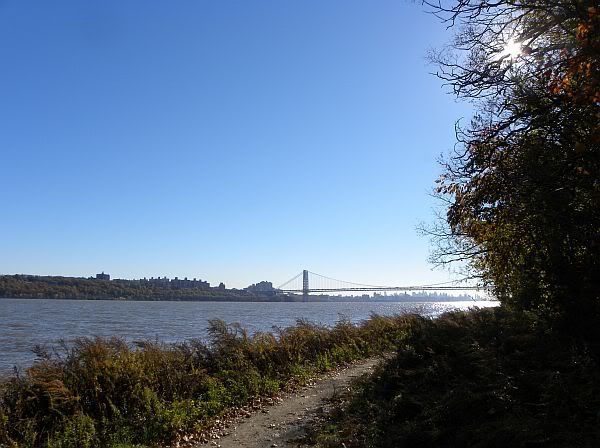
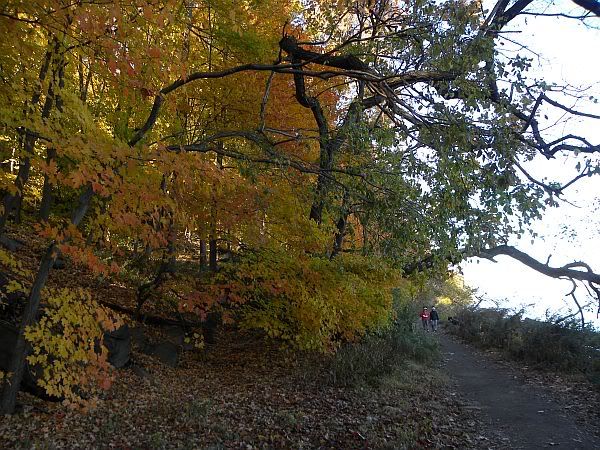

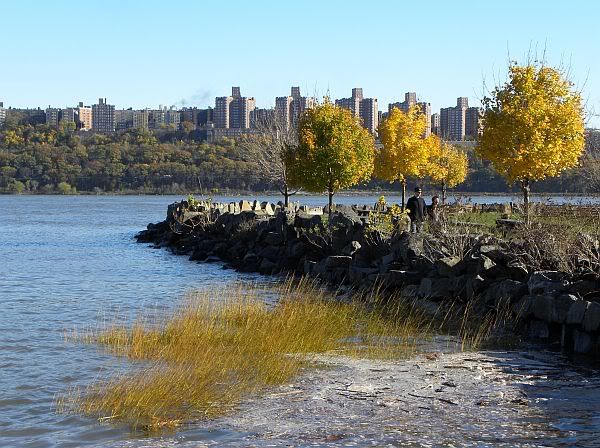
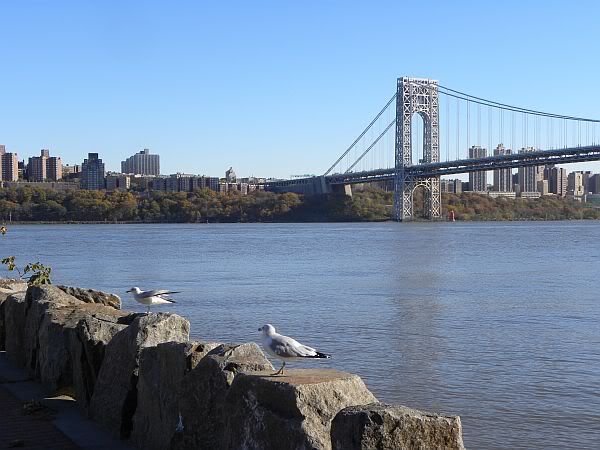
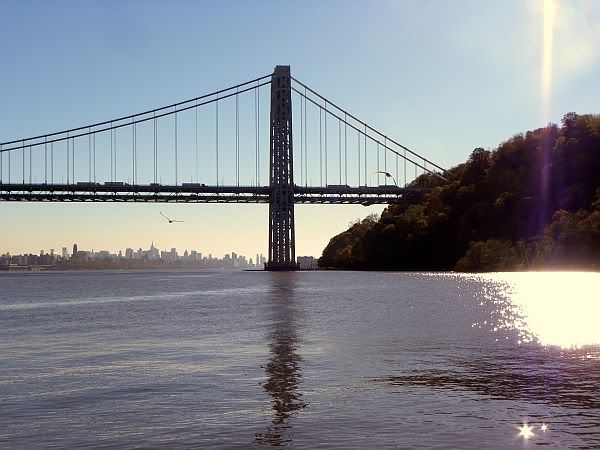

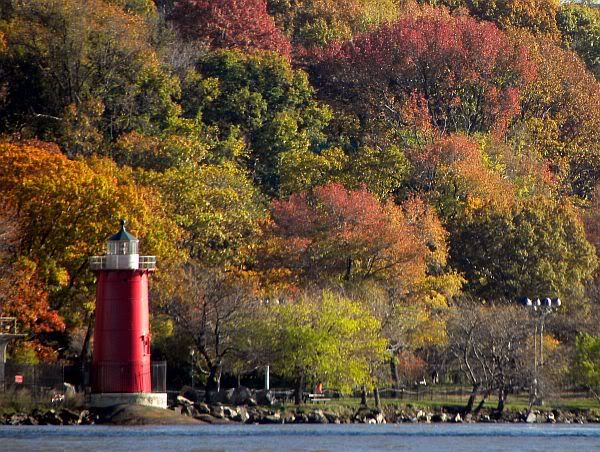
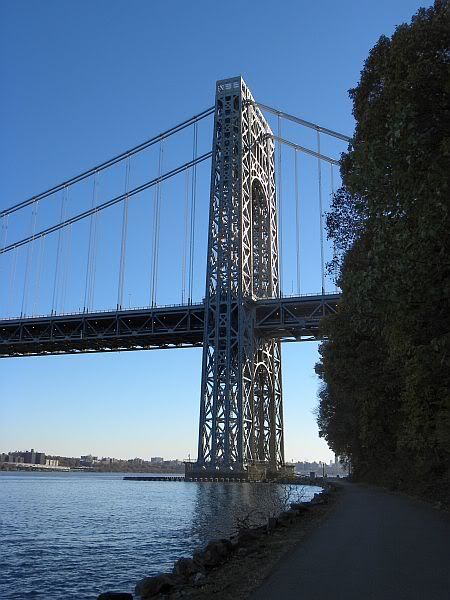
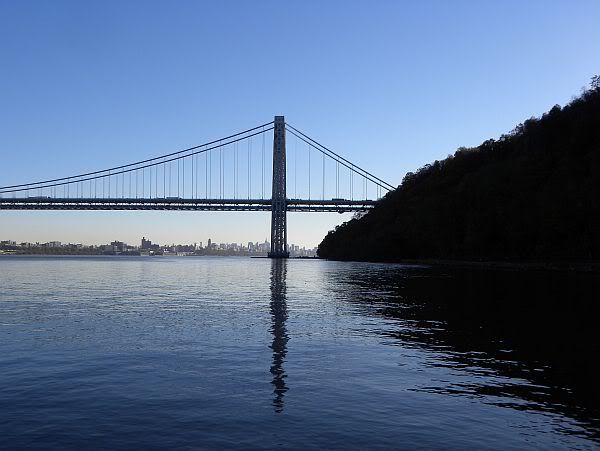
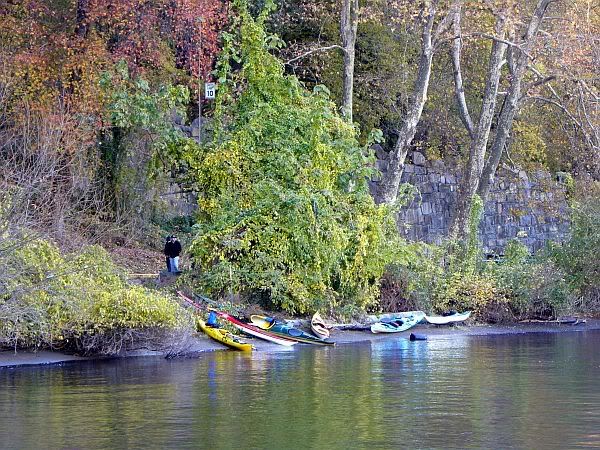

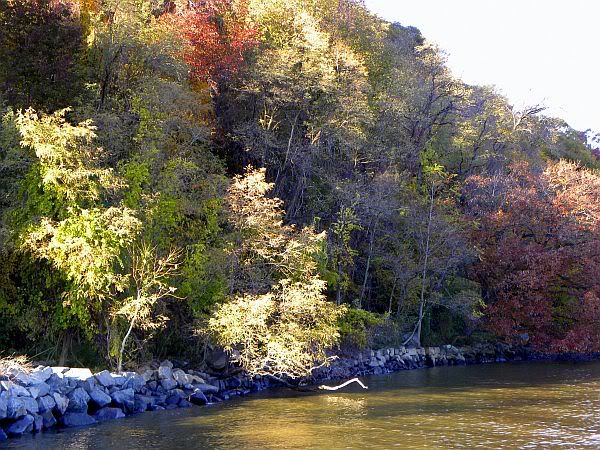
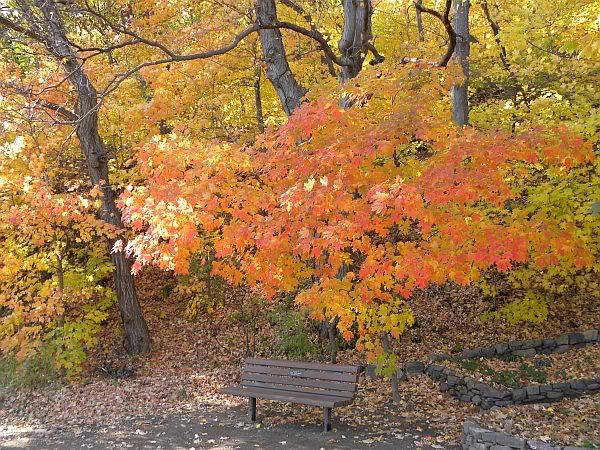
It was the first time I was ever under the George Washington Bridge on the other side and my first waterside New Jersey view of the Little Red Lighthouse. And look, I could see The Cloisters from there too.
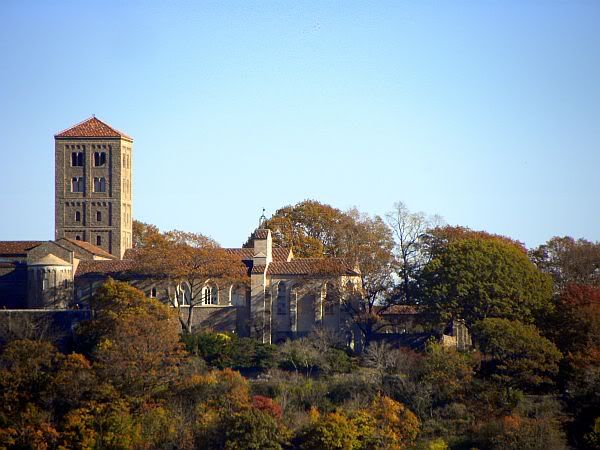
So I drove across the bridge to the Cloisters for a George Washington Bridge sunset.
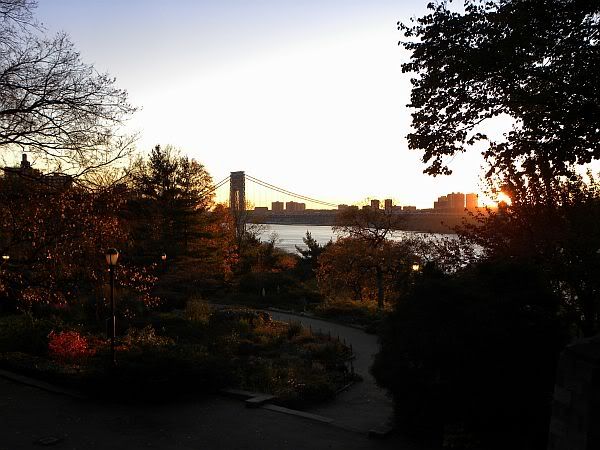

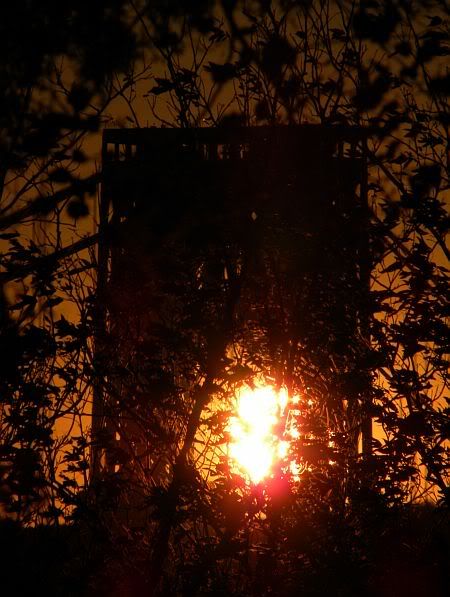
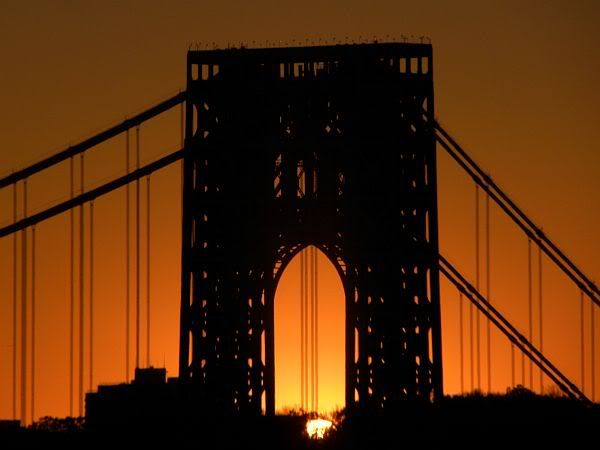
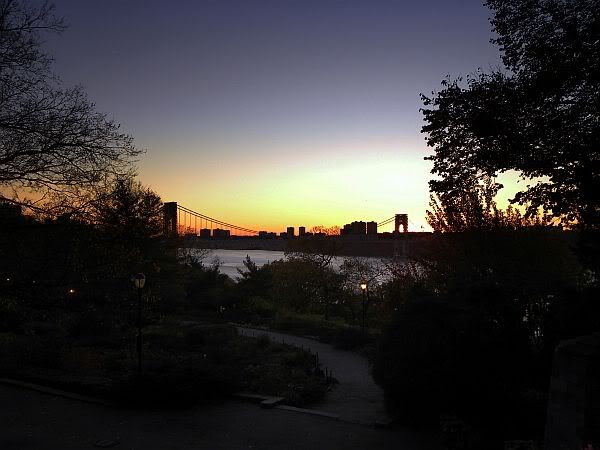
Friday I spent the afternoon in Central Park. I would be the last week before the musicians under the many Central Park bridges would change over to Christmas music. The Mall (or Poet’s Walk)was losing color and it seemed quiet for a Friday afternoon.

I was standing in one of my favorite places, the Bethesda Terrace where they say “If you stand there long enough you will meet everyone in New York.” I was viewing the Angel Bethesda aware that her healing waters would be drained the following week. Did you know that the Angel of the Water that stands above the Bethesda fountain is the Angel that winks at us in the very beginning of Angels in America?
Thinking about the legend of this Angel that I had learned from Tony Kushner about how she became a symbol of living with, not dying from AIDS. That during the days of the Second Temple the Angel Bethesda descended on the temple square in Jerusalem and just one angelic foot touched earth. Where her foot touched a fountain shot up from the ground. If anyone who was suffering in the body or the spirit walked through the waters of Bethesda they would be healed, washed clean of pain an suffering. When the Romans destroyed the temple, that fountain ran dry.
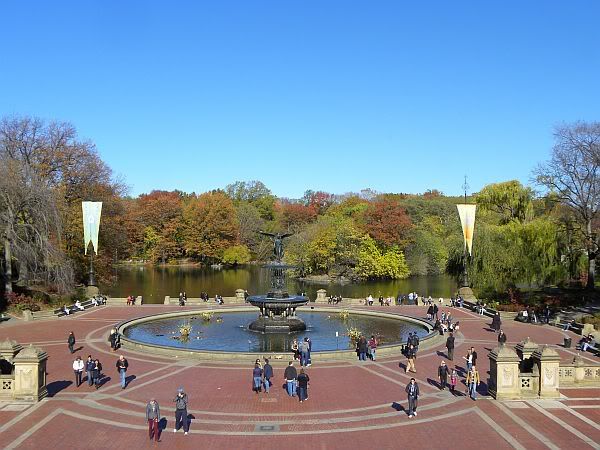
Watching the cast iron “Angel of the Water” waiting for her healing waters to be drained by the Department of Parks I heard the clop, clop of horse drawn carriages an the soliciting voices of pedicab drivers to my rear but from below the terrace I heard two voices that sounded to me like the voices of angels. I ran down the stairs to capture the music from under the bridge and caught the end of this song.
Their names are Kendra and Dominic. Both have built reputations as solo street musicians. They had recently decided to merge, so I guess they are now a street musician super group. I asked if they would mind me making a video for YouTube and they asked “What song would you like to hear?” I said “Whatever you would like to be posted on the internet and they picked this.
And that was immediately followed by;
Does Central Park have a musical identity? If it does than it must be John Lennon and because of the “Imagine” mosaic in Strawberry Fields, because Central Park was New York’s best idea, then “Imagine” would have to be the theme song of this peoples’ park.
By the way the ambient sounds in those videos are children squealing in delight as they burst giant bubbles. The music and those children made a perfect day even better for an inspired walk beside the lake.

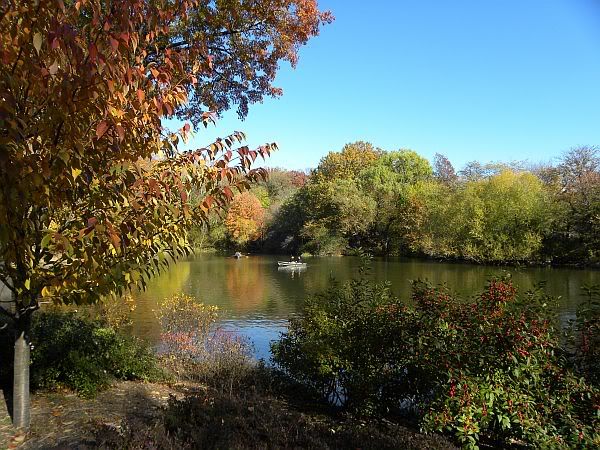

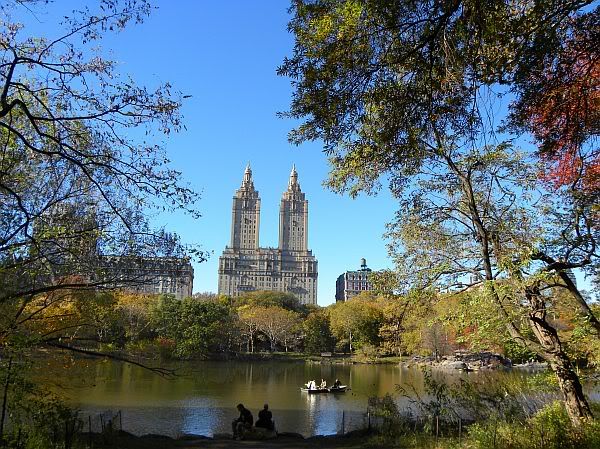
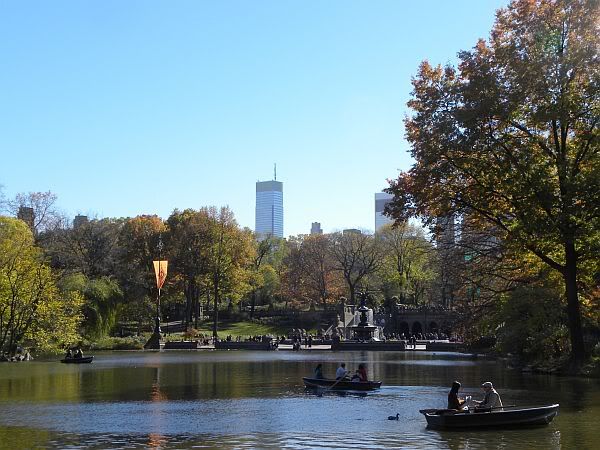
I was shocked, shocked to find the Bow Bridge empty. But the famous bridge was only half empty and it filled up in no time.

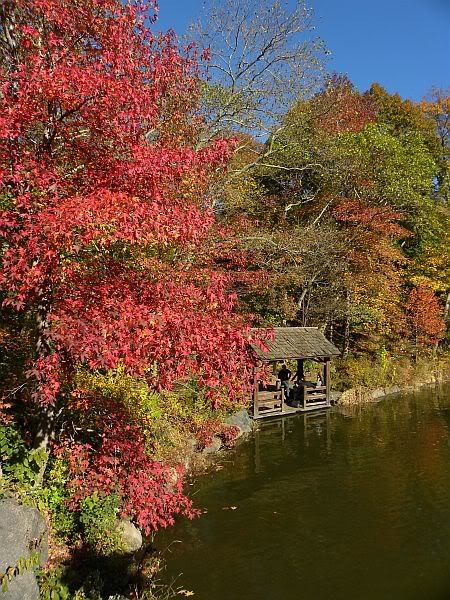

I would later run into an old friend I hadn’t seen in decades and we would grab some grass in the Sheep’s Meadow for the rest of the afternoon. Discussing old times and new it seemed comfortable remembering woman, beach houses and old cars “passed anything but a gas station.” A bit more disturbing when the topic became upcoming retirement. There we were two New Yorkers who knew each other as young men club hopping and we were discussing Boca Raton vs. Clearwater.
When the topic became places we’ve been I had to tell a story I had been thinking about since seeing Kendra and Dominic under the Bethesda Terrace. A day just after my first train ride in one of those six passenger compartments on a train. I was coming from a week in Rome and I had a room with a view on the Arno River. I decided to walk beside the river to compare the Uffizi Gallery with my recent visits to the Vatican Museums.
I was all alone. It was 1994 and I think it might have been my first solo vacation. I don’t think I spent a moment alone in Rome and the following week I would enjoy the company of many new found friends in Venice but Florence seemed built for a soloist. I was just walking in the afternoon sun on ancient quiet cobblestone streets with no river traffic to my right and not a pedestrian on the sidewalk to my left.
As I walked, wondering why all those fine looking restaurants were closed, the Ponte Vecchio grew larger and larger in my view. My Florence Access Guide told me that Hitler had ordered the bridge not to be bombed. My eyes told me that it was an early version of a shopping mall crossing a river. When I got to the bridge on my right I looked down at the gold merchants selling gold where butchers sold pork and beef in the fourteenth century.
But I turned to my left to the Uffizi that had reopened recently after a terrorist bombing. The were at least one hundred people on line and not to many hours left in the day so I decided on Michelangelo’s David instead. But my viewing of David would also be delayed.
As I walked into Palazzo Pitti for the first time in my life there was a good old American hippie with a guitar, surrounded by a crowd while strumming out the current tunes of day like Pearl Jam, the Red Hot Chili Peppers and Oasis. Actually he was a young American hippy, probably born in the late 70’s but he was dressed for the part.
After he finished with an unplugged version of “Lake of Fire” I went over to chat with him. He told me how he got there and why he was staying. Then he suggested I go to the Boboli Gardens while there was still light and come back for David at night. For directions he told me to follow these sixteen girls who had been watching him perform because they were going home for dinner and that was where they lived.
I looked over and there they were. Girls probably around twelve years old laughing, giggling and speaking Italian. They were all wearing the Catholic school uniforms I remembered from my youth and after saying goodbye to me new found friend I followed them back they way I’d come my thoughts on a few girls I once new wearing those uniforms when I was the age of these girls I was following.
I had to give up, they were in no hurry and I started feeling both old from watching their energy and a little creepy for following grammar school girls around. But when I stopped for a terrible tasting slice of pizza just before crossing the Ponte Vecchio, they caught up with me and I picked up the trail.
That was when I witnessed something I found to be amazing. Those young girls got to the middle of the Ponte Vecchio and formed a circle where they sat down. Then all sixteen began so very familiar back up vocals “Do do do do… do do do…do, do, do do.” Then one of the young girls with a beautiful high voice sang “When the night has come and the land is dark.” Another with a deeper voice added “And the moon is the only light we’ll see.” Then back to the first vocalist for “No I won’t be afraid, no I won’t be afraid, just as long as you stand, stand by me.” I just couldn’t handle it when all the rest, who never stopped do doing, chimed in as sixteen young Italian girls sitting on a very famous bridge sang out “And darlin’, darlin’, stand by me, oh now stand by me, stand by me, stand by me.”
I then gave up on the garden and walked back to see Michelangelo’s David for the first time in my life with Ben E. King singing “Stand by Me” in my head for a soundtrack.
Too bad that perfect day in Florence, Italy and the song on a famous bridge that I was reminded of from hearing Kendra and Dominic under a bridge that should be as famous on a perfect New York day, it was too bad I saw that during that period in my life when I was without camera. But I got Kendra and Dominic on camera.
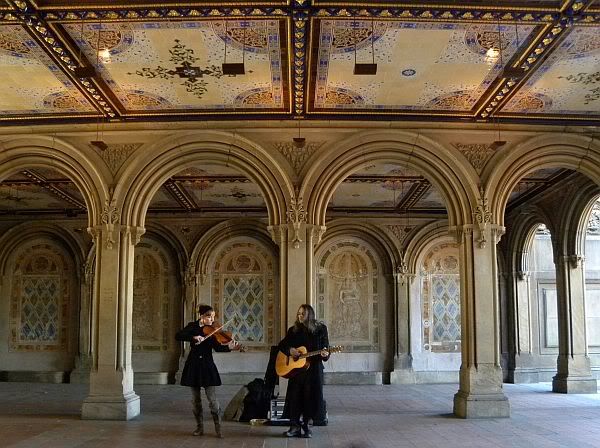
Because everyone knows winter is coming Saturday was a crowded day in Central Park.
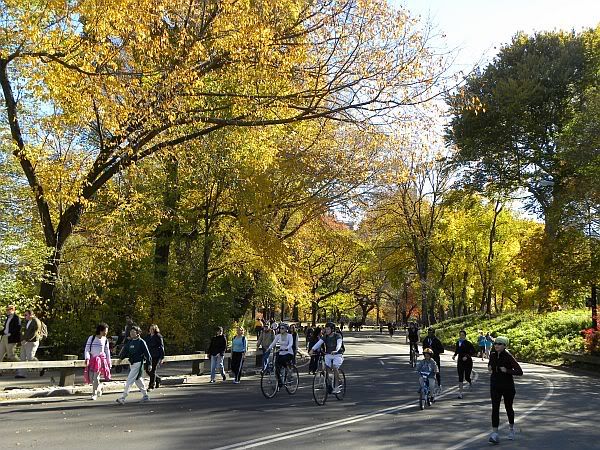
So I started out up at the pond in Harlem.



Exploring the Ravine and North Woods.

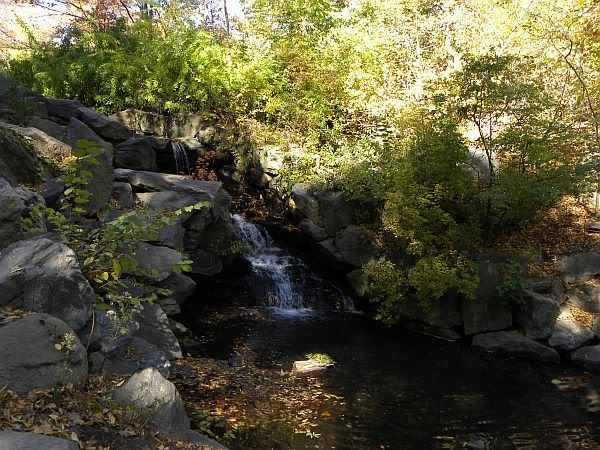
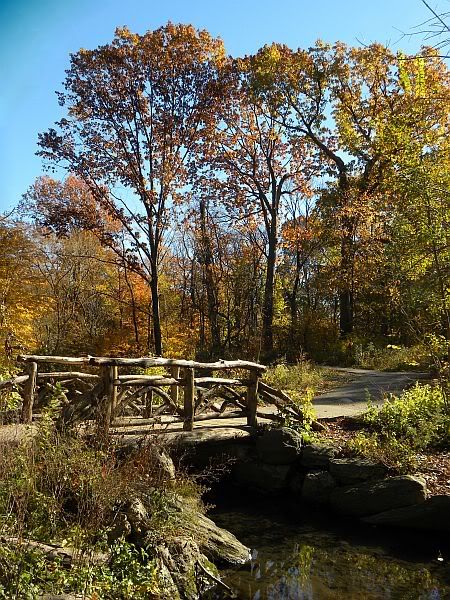
In the woods.

I spotted a hawk that was only ten feet away from me.
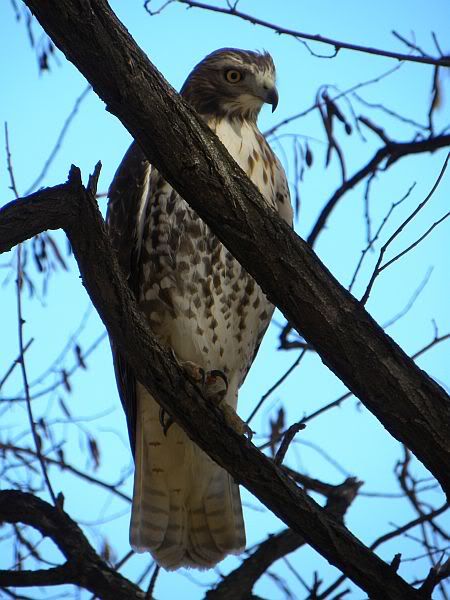
But the hawk didn’t like me much, so he (or she) flew to a perch that was twenty feet away.

Moving right along, heading south on the west side of the park.

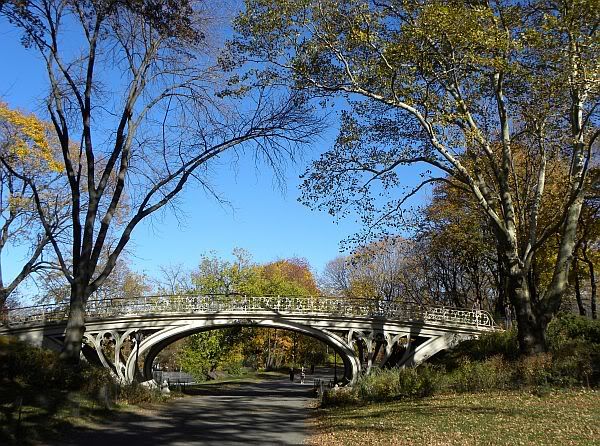

The road to Belvedere Castle.
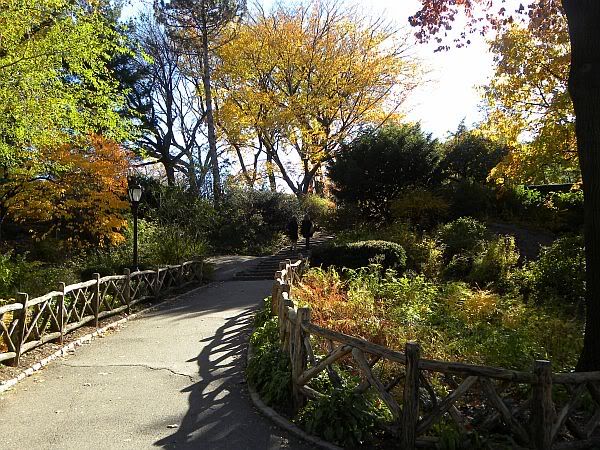
Shakespeare’s Garden.
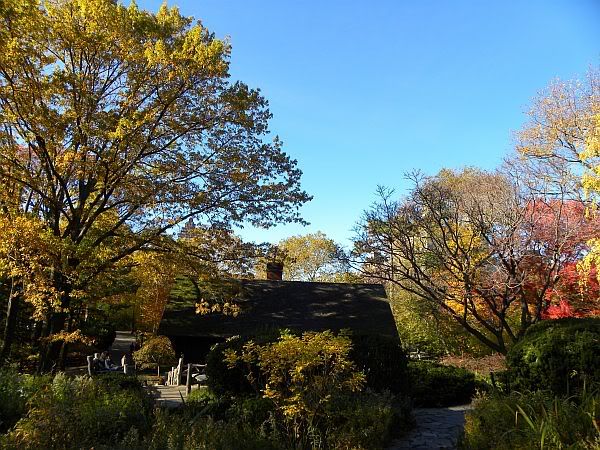
The lake again, the bridge in the Ramble and the view of Yoko Ono’s house.
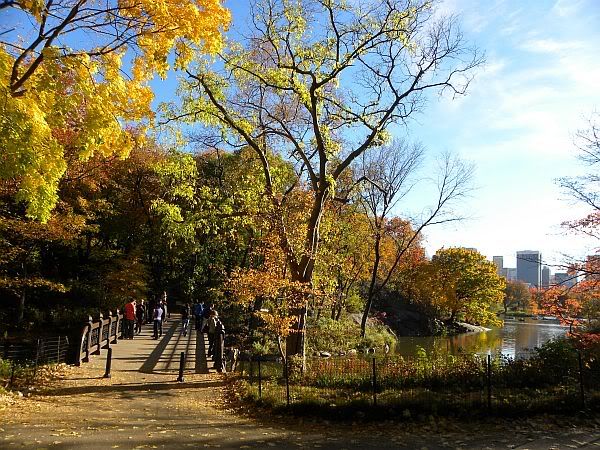
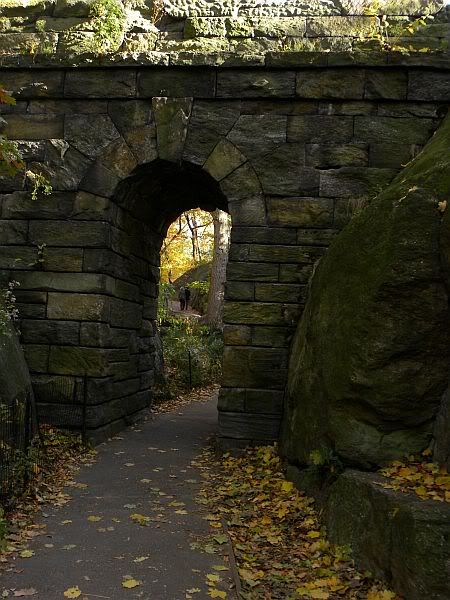
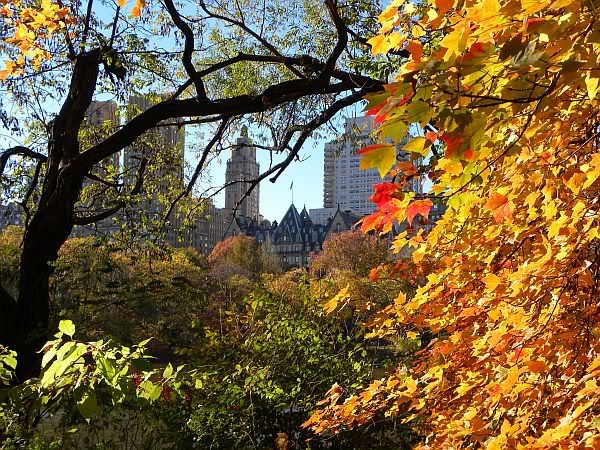
And back to The Angel of the Water.
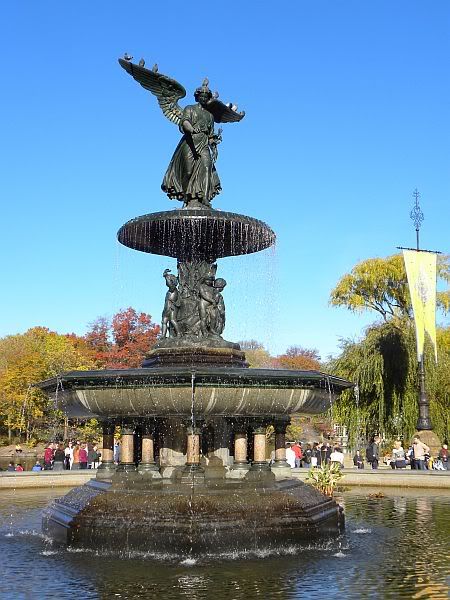
For more blowing bubbles but no Kendra and Dominic that day.
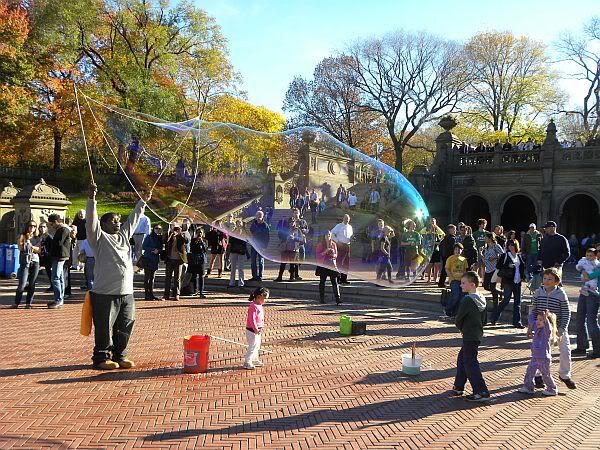
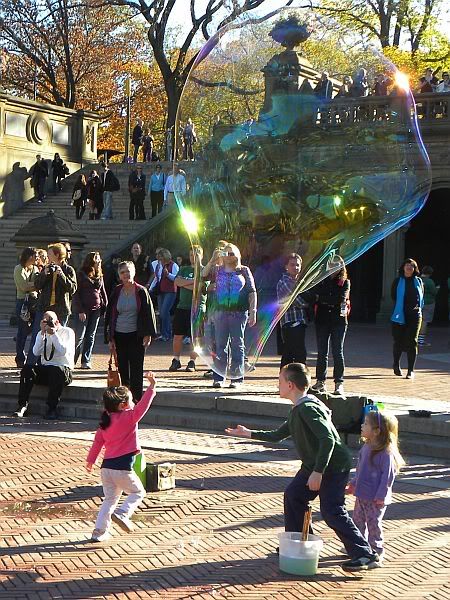
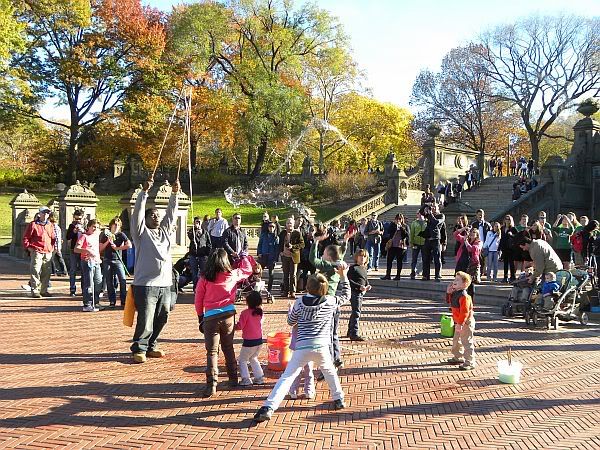
On Saturday I found my usual exit.

And payed my respects to John Lennon.
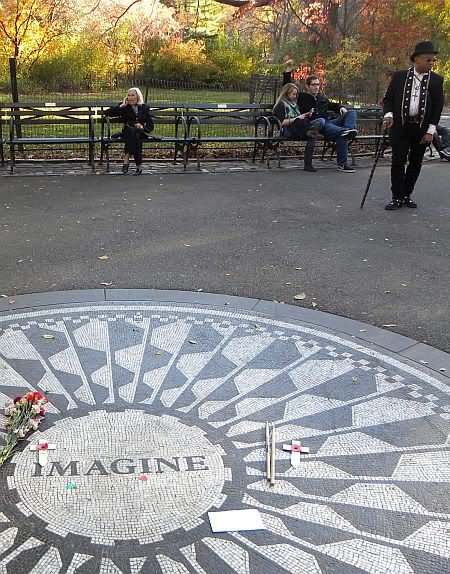
Freeze-frame, twilight last Sunday.
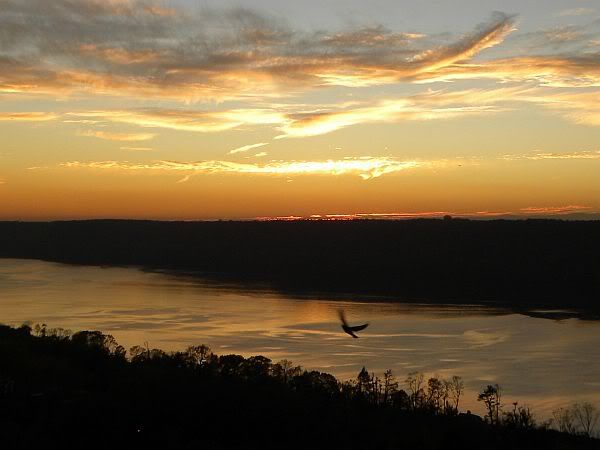
Not a bad week for a photo buff.

3 comments
Author
This bridge from a diary the week before, the light had never been so good to me. The afternoon light was perfect.
Bridges in Central Park are my favorite shots to capture. There are many to choose from and every bridge is different. There is the Bow Bridge that represents romance in New York, the breathtaking Ramble Bridge and the often missed amazing Huddlesone Arch.
The bridge in that photos that is up around the northwest side of the Jacqueline Kennedy Onassis Reservoir is called The Gothic Bridge by many, supposedly because;
It falls into my favorites, probably right behind Gapstow to photograph and it is because the bridge was once so pedestrians could safety walk above the equestrian path. Now it is a Central park history lesson.
Pine Bank is another that spans a no longer used horse path.
Here is Gapstow with that afternoon feel.
The Greywacke Arch in winter.
The terrace after the snow.
And a detail of the Bowbridge.
and was waylaid by this fascinating distraction that put a very pleasant end to a very tiring day.
I had the A/C on in my car. Most of the leaves are off the trees and the sun is so low in the sky that the visor is ineffective. Sunglasses are barely adequate against the glare.
I stopped at the grocery store to pick up the things my daughter texted me. When I came out the sun was nearly set, glowing red threw wispy clouds wit the waning moon rising in the east. Red sky at night, sailor’s delight.
It’s dark way too early. They should leave daylight saving in place year round and stop this idiocy of time changes. I think were ready for that.